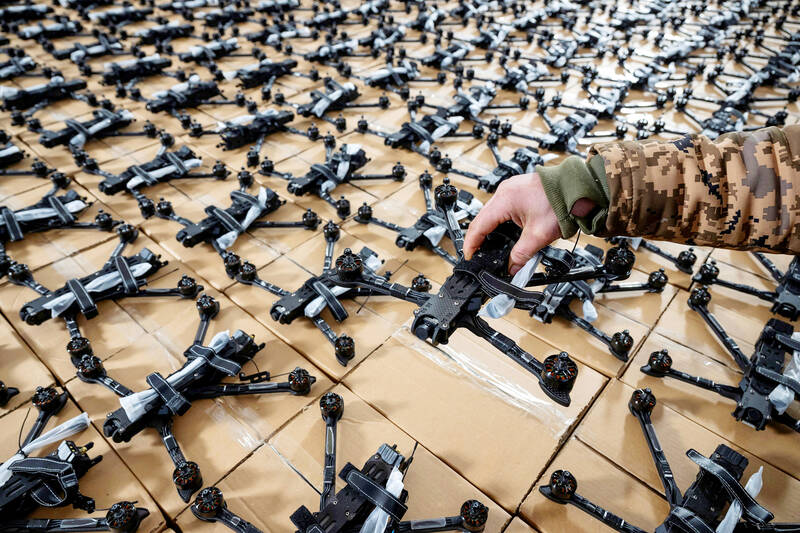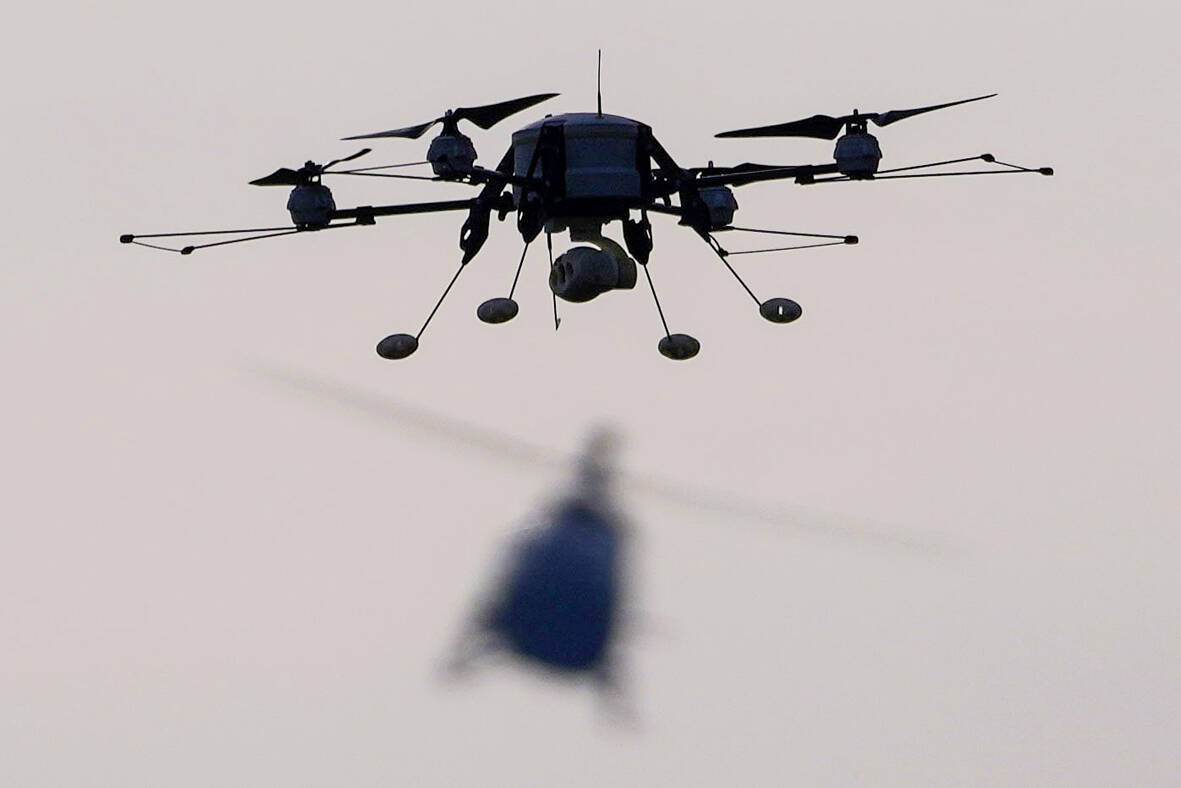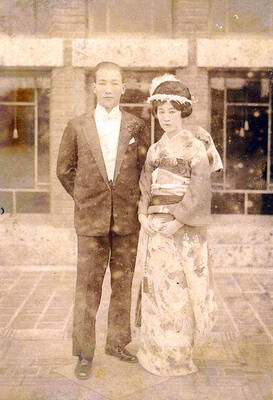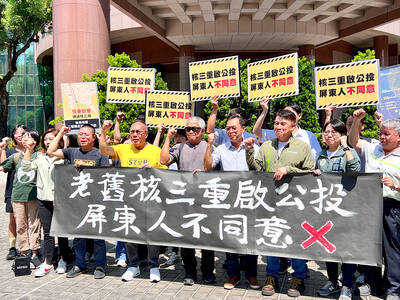The Russian invasion of Ukraine is often said to hold numerous lessons for the People’s Republic of China (PRC) and its desire to annex Taiwan. Indeed, many commentators have argued that Western support of the defense of Ukraine is integral to the defense of Taiwan.
Many writers have pointed to Russia’s failed occupation of Kyiv as a lesson that a decapitation strike, an attempt to win the war quickly with a single blow at the enemy government and capital, could fail and should be pursued with much greater force.
The decapitation strike is a classic Russian move, also used in the First Chechen War and in the Soviet invasion of Afghanistan. It failed in the first case as the invading troops were bogged down in heavy fighting in the capital city of Grozny. In Afghanistan the Soviets were able to gradually build up troops and equipment and take Kabul. It was the subsequent guerrilla war that defeated the USSR.

Photo: Reuters
DRONES
It is hard to see any lessons here since Russia had land borders with its victims, while the PRC does not. Yet, the normalization of PRC ADIZ flights around Taiwan is analogical to the infiltration of Soviet troops into Afghanistan: when the PRC wants to move it will already have air and sea assets around Taiwan, ready to go, especially in the late summer when everyone is already used to massive PRC demonstrations around Taiwan.
The drone issue is highlighted, not only by the way Ukraine and Russia have paired drones with artillery, but also by the use of drones in strikes on civilian targets by both sides, and by Ukraine’s use of drones to dominate the Black Sea. Taiwan has already moved to protect some of its infrastructure with anti-aircraft guns, but the PRC will upgrade its shipboard defenses against suicide drones. The PRC will likely use naval and aviation drones to degrade coastal defenses and installations and attack Taiwan’s air and sea bases. It may also use them to ship weapons and explosives to saboteurs and stay-behinds in Taiwan, and later, to suppress guerrilla activity in Taiwan.

Photo: AP
Janes reported three years ago that the PRC is using drones to provide logistical support to troops in isolated areas in Tibet. Of course, it is well known that Ukrainian sabotage teams are operating drones inside Russia to attack Russian airbases, a trick the PRC will copy, not only in Taiwan but also in the US. It will not be difficult to secretly ship PRC drones to Taiwan. Readers may recall that years ago, using well established smuggling networks and methods, art thieves dismantled a 12 meter high Chinese Buddhist pagoda with over 3,500 bas-relief sculptures and smuggled it into Taiwan.
The PRC’s support of the Russian economy could work in reverse: Russia could prop up a PRC war economy with exports of materials and fossil fuels. The PRC has seen that Western sanctions are toothless and easy to evade, and that Westerners themselves will evade them, even while lecturing others. Moreover, the evasion routes are well known and the PRC has much experience operating them as part of its normal relations with central Asia states such as Kyrgyzstan, already key route for German exports to Russia. At present the PRC is putting in a new rail line connecting Kyrgyzstan, Uzbekistan and the PRC, obviously eyeing them as a future conduit for sanctions-busting.
It seems that Russian grain ships are being permitted to pass unmolested through the Black Sea. PRC planners may well draw a couple of related lessons there. First, whoever argues for war may contend that PRC shipping may not be attacked. It seems bonkers to imagine the US not using submarines and air power to interdict PRC shipping and blockade the PRC, especially if it opens with the expected attacks on US assets in the Pacific. The issue is not whether the US will indeed attack PRC shipping, but whether elites in the PRC can convince each other that the US will leave their merchant shipping unmolested.
Before the reader objects that no one could be that stupid, remember, conversations about whether to start a war take place at a rarified level where common sense is a precious commodity and at heights to which on-the-ground information does not ascend. The Soviet leadership was told that an invasion would unite Afghans against the invader, and that the Soviets had excellent people on the ground in Kabul compiling useful and insightful reports. All that was ignored. Instead, the Soviets saw the invasion through the blinding lenses of wishful thinking and ideology, unable to see Afghanistan as a thing in itself, with its own agency (hello, PRC views of Taiwan!). I also commend readers to the US debacles in Iraq and Afghanistan, shaped by similar blindness and greed.
RESOLVE
The fact that Russian grain ships sail unmolested provides an additional argument for the PRC policy entrepreneur arguing for war: key commodities will be permitted to sail. War supporters in the PRC can claim that PRC products such as chemical precursors and manufactured parts would not be molested because many economies are dependent on them. For example, typically, the PRC produces 40-50 percent of the world’s chemicals, including 80 percent of its vitamin C and nearly 60 percent of its glyphosate.
Indeed, imagine our putative PRC war hawks attempting to convince their fellows by saying the US will have to permit its ships to travel because “Global shipping will grind to a halt! We have a near-monopoly on shipping container production!” Funny, right? Last year the US Federal Maritime Commission (FMC) produced a report on this looming danger, observing that just three PRC firms “manufacture over 95 percent of containers in the world’s market, including US domestic train and truck intermodal containers.” Moreover, it noted that these firms are state-owned and subsidized. This argument could be replicated across numerous industries, from advanced batteries to critical materials.
The clearest lesson the PRC is learning is not about logistics or tactics, but about Western resolve. The PRC can see that Europe’s elites do not care that Russia will move on Europe after it finishes Ukraine, though they have been told that by numerous informed analysts and by the Russians themselves. The eastern Europeans understand this, but west of the Oder River eastern European states are not taken seriously, a problem at least since the disappearance Austria-Hungary. The PRC can track Europe’s exports to Russia the same as anyone else, and will draw the obvious conclusions.
Finally, the struggle in Washington to get Ukraine the weapons it needs to win, a need obvious to every serious mind not warming a Congressional chair, is teaching the PRC that US elites have no shared grasp of US interests and are unable to take meaningful action in the service of perceived interests.
Is that really the lesson we should be teaching PRC planners?
Notes from Central Taiwan is a column written by long-term resident Michael Turton, who provides incisive commentary informed by three decades of living in and writing about his adoptive country. The views expressed here are his own.

Sept. 1 to Sept. 7 In 1899, Kozaburo Hirai became the first documented Japanese to wed a Taiwanese under colonial rule. The soldier was partly motivated by the government’s policy of assimilating the Taiwanese population through intermarriage. While his friends and family disapproved and even mocked him, the marriage endured. By 1930, when his story appeared in Tales of Virtuous Deeds in Taiwan, Hirai had settled in his wife’s rural Changhua hometown, farming the land and integrating into local society. Similarly, Aiko Fujii, who married into the prominent Wufeng Lin Family (霧峰林家) in 1927, quickly learned Hoklo (commonly known as Taiwanese) and

The low voter turnout for the referendum on Aug. 23 shows that many Taiwanese are apathetic about nuclear energy, but there are long-term energy stakes involved that the public needs to grasp Taiwan faces an energy trilemma: soaring AI-driven demand, pressure to cut carbon and reliance on fragile fuel imports. But the nuclear referendum on Aug. 23 showed how little this registered with voters, many of whom neither see the long game nor grasp the stakes. Volunteer referendum worker Vivian Chen (陳薇安) put it bluntly: “I’ve seen many people asking what they’re voting for when they arrive to vote. They cast their vote without even doing any research.” Imagine Taiwanese voters invited to a poker table. The bet looked simple — yes or no — yet most never showed. More than two-thirds of those

In the run-up to the referendum on re-opening Pingtung County’s Ma-anshan Nuclear Power Plant last month, the media inundated us with explainers. A favorite factoid of the international media, endlessly recycled, was that Taiwan has no energy reserves for a blockade, thus necessitating re-opening the nuclear plants. As presented by the Chinese-language CommonWealth Magazine, it runs: “According to the US Department of Commerce International Trade Administration, 97.73 percent of Taiwan’s energy is imported, and estimates are that Taiwan has only 11 days of reserves available in the event of a blockade.” This factoid is not an outright lie — that

The People’s Republic of China (PRC) yesterday paraded its military hardware in an effort to impress its own population, intimidate its enemies and rewrite history. As always, this was paced by a blizzard of articles and commentaries in the media, a reminder that Beijing’s lies must be accompanied by a bodyguard of lies. A typical example is this piece by Zheng Wang (汪錚) of Seton Hall in the Diplomat. “In Taiwan, 2025 also marks 80 years since the island’s return to China at the end of the war — a historical milestone largely omitted in official commemorations.” The reason for its